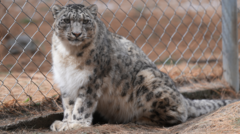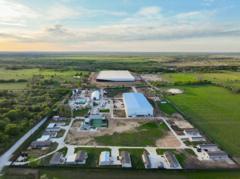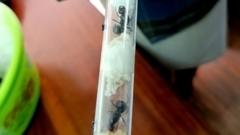In 2024, the scientific community celebrated significant achievements, from discovering a hidden Mayan city to advancements in fertility techniques for the critically endangered northern white rhino, showcasing the intertwining of exploration, conservation, and innovation.
Breakthroughs in Science and Discovery Shine in 2024

Breakthroughs in Science and Discovery Shine in 2024
A year marked by remarkable scientific feats, including a lost Mayan city unveiling and IVF success for endangered rhinos.
This year has been exceptional for scientific advancements and discoveries, captivating the world with exciting developments. From rare celestial events to groundbreaking conservation efforts, 2024 has highlighted some remarkable milestones.
One of the standout moments was marked by billionaire Elon Musk's SpaceX as they achieved a significant milestone with their Starship rocket. In an impressive feat, the rocket's lower booster was captured by mechanical arms upon its return, paving the way towards fully reusable rockets for deep space travel. As SpaceX engineers celebrated the event, the achievement has bolstered hope for increased accessibility to space.
Additionally, the fascination with outer space continued as billionaire Richard Branson completed the first private spacewalk, and a sizable reservoir of liquid water was discovered deep within Martian rocks, suggesting potential for life beyond our planet.
Another notable scientific achievement arrived from studying the humble fruit fly. Researchers completed a comprehensive mapping of the fly's brain – revealing 130,000 cells and 50 million connections. Described as a groundbreaking study, this research illuminates our understanding of neurobiology and how it may correlate to human cognition.
Exploration into the past delivered thrilling results when a lost Mayan city was discovered almost by chance. PhD student Luke Auld-Thomas, while analyzing Lidar data for environmental studies, noticed the remnants of a grand city named Valeriana, once bustling with life between 750 and 850 AD. This ancient settlement was revealed under thick jungle canopy; archaeologists found pyramids and sports fields, breathing new life into our understanding of ancient cultures.
In the realm of endangered species conservation, scientists celebrated a pivotal moment when the first successful IVF rhino pregnancy was achieved. The procedure, conducted with a southern white rhino as a surrogate, showcased that it is possible to nurture northern white rhino embryos, of which only two remain. While the surrogate tragically succumbed to an infection, the viable fetus's development offered a glimmer of hope for the future of the critically endangered species.
The year has also seen encouraging signs in biodiversity restoration. A comprehensive study revealed that ten years of conservation initiatives have effectively mitigated species loss in two-thirds of cases assessed worldwide, encouraging further investment in conservation measures.
A celestial spectacle captured the imagination of millions as a total solar eclipse traversed Mexico, the US, and Canada, drawing attention and awe not seen since the 2017 eclipse thanks to its broader path of visibility over urban areas.
Lastly, a poignant moment for nature involved the beloved Sycamore Gap tree, which was tragically cut down in 2023. However, in a heartening turn, seedlings from the tree were saved and are now growing, allowing the legacy of this iconic symbol to continue through new life.
Indeed, 2024 has shaped up to be a memorable year in science that brings excitement for what lies ahead in exploration, conservation, and human achievement.




















